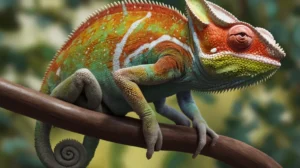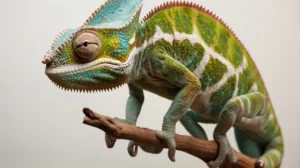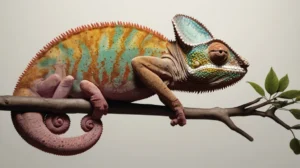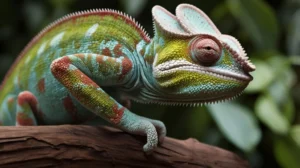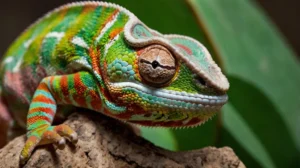Chameleon Handling: Affection or Stress?
One of the common questions from prospective chameleon owners, especially those used to more interactive pets, is whether chameleons enjoy being handled. While the image of a chameleon perched on an owner’s arm is popular, the reality for the animal is often far less idyllic. Understanding their natural behavior is key to answering this question responsibly.
Understanding Natural Instincts
In the wild, chameleons are solitary creatures. They spend their lives arboreally (in trees and bushes), primarily focused on hunting, hiding from predators, and finding mates.
- Solitary Nature: They do not form social bonds in the way mammals or even some other reptiles do. Interaction with other beings is typically limited to mating or territorial disputes.
- Prey Animals: Despite being predators to insects, they are prey for many larger animals (birds, snakes). Being grasped or restricted triggers a strong ‘flight or fight’ (mostly flight or freeze/display) response.
- Movement and Security: Their unique feet (zygodactylous) and prehensile tail are adapted for gripping branches, providing security. Being on an unstable or unfamiliar surface like a hand can be inherently unsettling.
From a chameleon’s perspective, a human hand approaching is often perceived as a potential threat, not a source of comfort.
Recognizing Stress Indicators During Handling
Even if a chameleon tolerates handling, it doesn’t mean it enjoys it. Observing their body language is crucial. Signs of stress include:
- Color Change: Often darkening to black or brown, or displaying unusually bright, contrasting “stress” patterns.
- Gaping Mouth: Opening the mouth widely, sometimes accompanied by hissing.
- Puffing Up/Flattening Body: Trying to appear larger or smaller as a defensive posture.
- Closing Eyes: Not out of relaxation, but often as a sign of extreme stress or submission.
- Frantic Movement or Immobility: Trying desperately to escape, or freezing completely.
Behavioral research, often discussed in publications focusing on reptile ethology, consistently links these displays to negative stress responses in chameleons.
Chronic Stress Kills: Repeatedly subjecting a chameleon to stressful handling can weaken its immune system, leading to loss of appetite, lethargy, and increased susceptibility to diseases. What seems like tolerance might be fearful resignation.
Why Avoid Regular Handling?
Beyond the stress factor, there are practical reasons to limit handling:
- Risk of Injury: Chameleons can easily be dropped, leading to internal injuries or broken bones. Their ribs are delicate.
- No Benefit to Chameleon: Unlike domesticated animals like dogs or cats, chameleons do not seek or benefit psychologically from physical interaction with humans.
- Promotes Negative Association: Frequent forced handling can make necessary interactions (like vet visits or cleaning) even more stressful.
The consensus among experienced keepers and herpetologists is that chameleons are best appreciated as observation animals.
Safe & Necessary Handling
There will be times when moving your chameleon is unavoidable (e.g., vet visits, deep enclosure cleaning). Here’s how to minimize stress:
- Be Calm and Slow: Approach slowly from below or the side, avoiding ‘predator-like’ movements from above.
- Encourage, Don’t Grab: Place your hand or a stick gently in front of the chameleon and encourage it to walk onto it voluntarily.
- Support Fully: If you must lift it, ensure its feet and tail have purchase and its body is supported.
- Keep it Brief: Make the interaction as short as possible. Have its transport container or temporary holding area ready.
Hand-Feeding as an Alternative: Some keepers build trust by offering insects via tongs or occasionally by hand (if the chameleon approaches willingly). This can create a positive association without the stress of full handling.
Alternative Interaction
Enjoying your chameleon doesn’t require holding it. You can interact by:
- Observing its natural behaviors: hunting, climbing, resting.
- Maintaining its complex environment meticulously.
- Occasionally offering food items via tongs.
- Appreciating its beauty and unique adaptations from outside its enclosure.
Ultimately, respecting a chameleon’s innate nature means understanding that for them, minimal handling equates to maximum well-being. Prioritize their needs over the desire for a hands-on pet.
